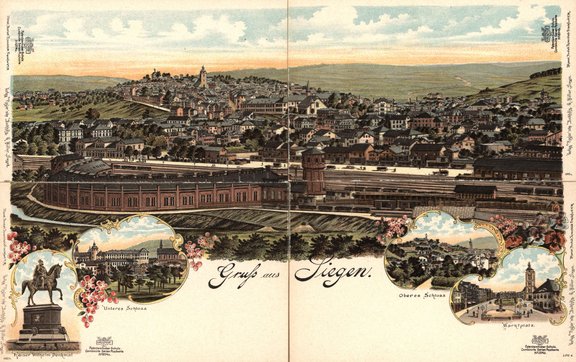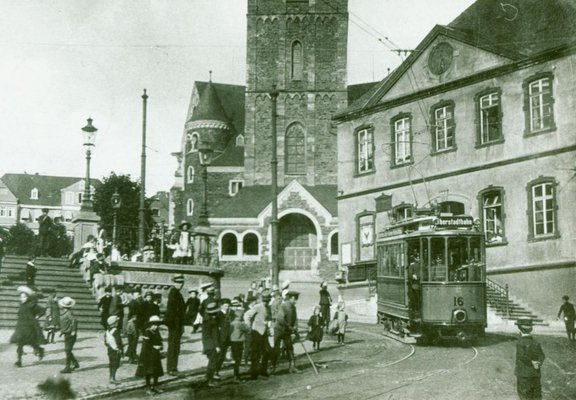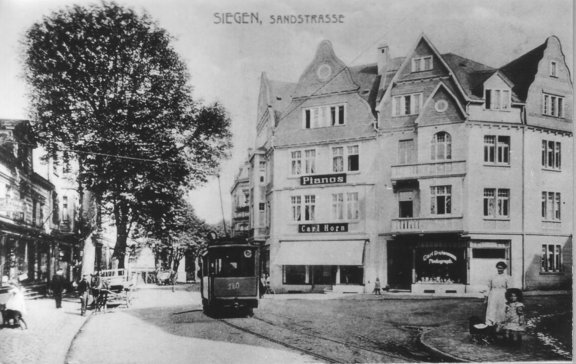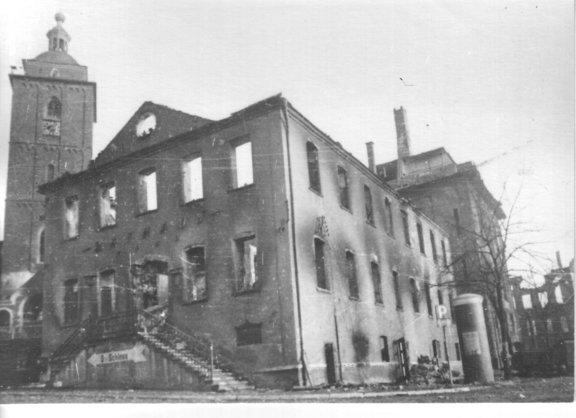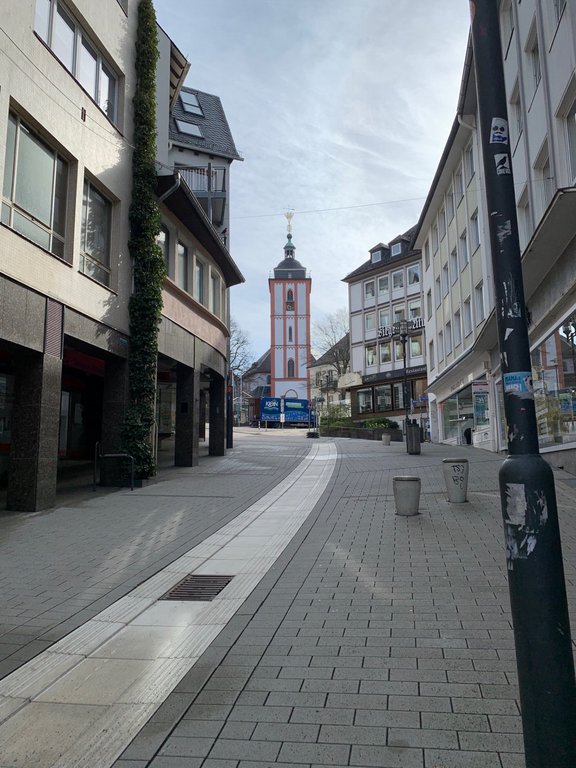magaSIn
The Oberstadt or Unterstadt – which is the city centre?
Two hearts beat in the breast of Siegen: the historic heart of the Oberstadt on the Siegberg, and the more youthful shopping and commercial heart of the Unterstadt in the Siegtal valley. The two zones are connected by a new ‘Mitte’ district, which benefited from a radiant makeover that included the unearthing of the city’s eponymous river in 2012.
Siegen’s expanding boundaries
The Oberstadt has been the historic centre of Siegen for more than a thousand years. People’s lives revolved around the Siegberg, which is enclosed by the city walls, well into the 19th century. At that time, the Unterstadt – which now accommodates the main station as well as vibrant shopping arcades – was an area of swamp and grassland; windmills turned by a pond roughly where Sandstrasse runs today. 1861 – the year the Unterstadt was born – turned out to be a milestone in the development of Siegen. Not far from the centre of town, the Ruhr-Sieg railway line connecting Hagen with Siegen was inaugurated on 5 August. Coal from the Ruhr was transported to the Siegerland region for smelting as the population of Siegen rocketed from 3,421 to 12,902 inhabitants in the space of 14 years. In the course of this expansion, sections of the city walls were restored and splendid structures typical of this founding period sprang up between the old town and the new traffic hub. Today, however, all that remains of Siegen’s former architectural wonders is historic photographs …
The Second World War transforms the skyline
Siegen was largely spared aerial attacks until the massive bombing raid of 1944. During the tenure of mayor Alfred Fißmer (1878–1966), numerous concrete bunkers and shelters had been installed in old mine tunnels to protect the city’s people. Then on 16 December 1944, just before 11.30am English time, around 100 Lancaster bombers took off for Siegen – and everything changed. At approximately 3.00pm, fifty thousand incendiary bombs and 500 high explosive bombs started raining down on the city. In just seven minutes, Siegen was reduced to rubble and ashes. Even today, unexploded ordnance is found during construction work, prompting large-scale evacuations in the city to allow for bomb disposal.
A functional new start
The destruction of many of the city’s historic buildings necessitated a radical period of urban renewal. The Oberstadt was largely reconstructed according to the original plans; meanwhile the Unterstadt (between the station and the Siegberg) fell victim to the urban planning ideas of the 1960s, which were somewhat functional and car-oriented by today’s standards. The magnificent Gründerzeit-era facades of Bahnhofstrasse, once lined by restaurants, cafés and hotels, gave way to the pragmatic development of large complexes to support trade and office work.
Steepest pedestrianised zone in Germany
Siegen’s shopping district may have drifted steadily towards the Unterstadt since the closure of Kaufhof in the Oberstadt, yet the pedestrianised zone linking the Oberstadt to the Unterstadt remains a defining feature of the city: uniquely, it is the steepest pedestrian precinct in the country with an incline of no less than 10 per cent. Even as far back as 1910, attempts were being made to ease the climb with the opening of the Oberstadtbahn. The electric light railway struggled up through the steep and narrow passages of the old town, however, and ceased its cumbersome operations after just four years. Since 2006, it has been possible to reach the Oberstadt on an evocative ‘Hübbelbummler’ bus. The Oberstadt is characterised by small, owner-managed shops, cafés and eateries. Thanks to the relocation of a university campus to the Unteres Schloss, the district is now poised to re-emerge as the beating heart of Siegen.
For more information: https://visitsiegen.de/magasin/details/siegen-mitte-so-kommt-die-uni-in-die-stadt
